We´ll visit London in APRIL!!!!!!.
This is the timetable of events for the four days
5th April
Tate Modern
The Globe
The Tower of London
The London Bridge
-AFTERNOON-EVENING: Trafalgar Square
Harrods
6th April
Buckingham Palace
The National Gallery
-AFTERNOON-EVENING: Piccadilly circus
Regent Street
Oxford Street
7th April
Camden Town
-AFTERNOON-EVENING: The Big Ben
The Houses of Parliament
Dowing Street
Covent Garden
8th April
-MORNING: English Breakfast
-AFTERNOON-EVENING: Return to MadridFROM OUR SCHOOL WE PREPARE THE TRIP
The bus is readyGOOD-BYE!!!!!!!
- Debenhams, the flagship of the national department store chain.
- HMV, the music retailer has three stores on the street including a concession within Selfridges and its shop at 150 Oxford Street, which is Europe's largest music shop at 50,000 square feet (5,000 m2)
- House of Fraser, the London flagship of the national department store chain.
- John Lewis, the third-largest department store in the UK and flagship of the John Lewis chain, opened in 1864
- Marks & Spencer. Marks & Spencer Marble Arch, largest Marks & Spencer store of 170,000 square feet (16,000 m2) at the junction of Oxford Street and Orchard Street.
- Selfridges, Oxford Street, the second-largest department store in the UK and flagship of the Selfridges chain, it has been on this site for over a century
- Topshop
_________________________________________________________
 SOME INFORMATION ABOUT THE PLACES WE ARE VISITING
SOME INFORMATION ABOUT THE PLACES WE ARE VISITINGCathedral & History
St Paul's is London's Cathedral and embodies the spiritual life and heritage of the British people. Cathedrals serve a wide community. A Cathedral houses the seat - or in Latin, cathedra - of the bishop, making it a centre for Christian worship and teaching, and the Christian mission.
St Paul's Cathedral acts as an important meeting place for people and ideas, as a centre for the arts, learning and public debate.
St Paul’s is the Cathedral of the Diocese of London. The Diocese is made up of five episcopal areas: Willesden, Edmonton, Stepney, London and Kensington. Four of these have an Area Bishop, to whom the Bishop of London, The Right Reverend and Right Honourable Richard Chartres, delegates certain responsibilities. The Bishops are assisted by Archdeacons. Archdeaconries are further divided into deaneries which are groups of parishes.
St Paul’s is the Cathedral of the Diocese of London. The Diocese is made up of five episcopal areas: Willesden, Edmonton, Stepney, London and Kensington. Four of these have an Area Bishop, to whom the Bishop of London, The Right Reverend and Right Honourable Richard Chartres, delegates certain responsibilities. The Bishops are assisted by Archdeacons. Archdeaconries are further divided into deaneries which are groups of parishes.
TATE MODERN
Lichtenstein: A Retrospective
Tate Modern: Exhibition
21 February – 27 May 2013
THE GLOBE

El teatro The Globe (El Globo) fue construido
en 1599 por Peter Street; se encontraba a
orillas del río Támesis en las afueras de la ciudad de Londres; se cree que era un polígono de
aproximadamente 30 metros de diámetro (medida aproximada que compartía con el
resto de los teatros de la época) este tamaño permitía el ingreso de un total de
3.351 espectadores, a pesar de ello no se puede saber si el teatro brindó alguna
función con su capacidad colmada.
El escenario era un rectángulo que sobresalía de la circunferencia de la
construcción e invadía el sector del proscenio, medía aproximadamente 13 metros
de ancho por 8 metros de profundidad y un metro y medio de altura.
Tenía dos trampillas a
través de donde se llegaba al escenario por la parte inferior del mismo, la
primera se encontraba en el sector anterior y la otra en el posterior. La parte
de abajo del escenario era conocida como el infierno y por allí aparecían y
desaparecían personajes sobrenaturales (demoníacos) tales como el fantasma de Hamlet.
Las columnas que se encontraban sobre el escenario sostenían el techo en
donde se encontraba otra trampilla desde la cual colgaban personajes divinos
provenientes del cielo; probablemente estos fueran sostenidos con las cuerdas
y/o arneses que se pudieran conseguir en la época.
Las tres puertas que daban al escenario conducían al detrás de escena en
donde esperaban su entrada los actores y por donde salían los personajes heridos
que morían fuera de escena, estos luego eran conducidos a la altura de alguna de
las puertas para que la audiencia pudiera verlos, sin la necesidad de que
ingresaran nuevamente al escenario, y así comprender que habían sido muertos
realmente.
Encima de estas puertas
se encontraba un balcón que era utilizado cuando se necesitaba un espacio
superior para desarrollar la acción; una de sus más famosas utilizaciones fue en
la ya conocida escena de Romeo y Julieta.
Para la construcción de
este teatro se utilizó material del desmantelado The Theatre. Cuando en
1597 expiró la licencia de ese teatro (el
primero de la época isabelina) su dueño, James Burbage, debió mudarlo del otro
lado del río Támesis cambiándole el nombre.
Al igual que la mayoría
de los teatros de la época (a excepción del Blackfriars que estaba cubierto) el The
Globe era una construcción sin techo para la parte del proscenio, lo cual
impedía las presentaciones los días lluviosos, por esta razón, y a causa del
frío del invierno, el teatro solo funcionaba durante el verano (de Mayo a
Octubre) mientras durara la luz del día. Las presentaciones se llevaban a cabo
durante los fines de semana, comenzaban después del almuerzo, aproximadamente a
las dos de la tarde (se almorzaba alrededor de las once, doce) y se extendían
hasta antes del anochecer; esto se hacía así por razones obvias de falta de
iluminación. Las localidades costaban desde 1 penique en el proscenio (donde
estaban de pie) hasta 6 para la platea.
Este teatro sirvió de
acogimiento a la compañía teatral Lord Chamberlain’s Men en la cual
participara el famoso dramaturgo William Shakespeare; este recinto tuvo el
honor de ser cuna de obras tales como El rey Lear, Julio César, Macbeth, Hamlet, Otelo,
etc.
En 1613 un incendio destruyó las instalaciones del teatro,
sin embargo fue inmediatamente reconstruido en 1614 y demolido en 1644 bajo las sombras del renacido puritanismo inglés que
condenaba las presentaciones teatrales de la época isabelina.
En el año 1997 el teatro volvió a abrir sus puertas bajo el nombre
de Shakespeare's Globe Theatre respetando las formas de la antigua
construcción. El recinto se encuentra a unos 200 metros del sitio en donde abrió
sus puertas por primera vez. Al igual que el original solo se exponen obras
teatrales durante la estación del verano, pero a diferencia de ese, solo tiene
capacidad para unas 1500 personas.
THE TOWER OF LONDON

The Tower of London is one of the world’s most famous fortresses and has seen service as royal palace,
prison, armoury and even a zoo. The ancient stones reverberate with dark
secrets, priceless jewels glint in fortified vaults and pampered ravens strut
the grounds.
Constructed over 900 years ago by William the Conqueror, the Tower of London is steeped in a rich history. This fortress was expanded by many medieval kings and is a grand structure used by Royals through the years as a refuge and powerbase.
The Tower is still home to her majesty's Crown Jewels, on display for visitors to see, and the infamous Beefeaters tasked with the job of guarding them as well as showing visitors some of the attractions highlights.
The White Tower is the huge and beautiful stone building in the middle of the sight. Currently it hosts the exhibition of Tudor, Stuart, Hanoverian and Windsor arms and armour “Fit for a King”. This vast collection begins by exploring armour created for both the battle and sports fields with an un-missable chance to see Henry VIII’s and Charles 1’s spectacular armour.
Situated in central London just a stones throw from the River Thames, the Tower of London is the one of the city's premier attractions. With so much on offer it's no wonder it's popular with visitors.
Constructed over 900 years ago by William the Conqueror, the Tower of London is steeped in a rich history. This fortress was expanded by many medieval kings and is a grand structure used by Royals through the years as a refuge and powerbase.
The Tower is still home to her majesty's Crown Jewels, on display for visitors to see, and the infamous Beefeaters tasked with the job of guarding them as well as showing visitors some of the attractions highlights.
The White Tower is the huge and beautiful stone building in the middle of the sight. Currently it hosts the exhibition of Tudor, Stuart, Hanoverian and Windsor arms and armour “Fit for a King”. This vast collection begins by exploring armour created for both the battle and sports fields with an un-missable chance to see Henry VIII’s and Charles 1’s spectacular armour.
Situated in central London just a stones throw from the River Thames, the Tower of London is the one of the city's premier attractions. With so much on offer it's no wonder it's popular with visitors.
TOWER BRIDGE
Este es uno de los puentes más recientes de Londres. Se empezó su construcción en 1886 para descongestionar los otros puentes de la city con un diseño de Horace Jones.
Se construyó levadizo para no cortar el tráfico, ya que los barcos entraban en el Upper Pool; y de estilo gótico para que armonizara con la Tower of London.
Las dos torres tienen una estructura de acero recubierta de piedra donde se alberga la maquinaria hidráulica y los ascensores que llevan a la Tower Bridge Experience donde hay una exposición sobre el puente y la sala de motores donde las calderas de carbón movían el puente hasta que fue electrificado en 1976.
Antiguamente el puente se abría unas 50 veces al día, en cambio hoy con el puente cerrado se abre no más de 500 veces al año, en verano sobretodo y en alguna celebración.
Metro: London Bridge o Tower Hill.
Se construyó levadizo para no cortar el tráfico, ya que los barcos entraban en el Upper Pool; y de estilo gótico para que armonizara con la Tower of London.
Las dos torres tienen una estructura de acero recubierta de piedra donde se alberga la maquinaria hidráulica y los ascensores que llevan a la Tower Bridge Experience donde hay una exposición sobre el puente y la sala de motores donde las calderas de carbón movían el puente hasta que fue electrificado en 1976.
Antiguamente el puente se abría unas 50 veces al día, en cambio hoy con el puente cerrado se abre no más de 500 veces al año, en verano sobretodo y en alguna celebración.
Metro: London Bridge o Tower Hill.
Antiguamente el puente se abría unas 50 veces al día, en cambio hoy con el puente cerrado se abre no más de 500 veces al año, en verano sobretodo y en alguna celebración.
Metro: London Bridge o Tower Hill.
 Trafalgar Square
Trafalgar Square
Trafalgar Square, at the heart of London, is one of the city’s most vibrant open spaces.
Managed by the Greater London Authority, Trafalgar Square is a landmark in central London enjoyed by Londoners and all visitors alike. It is a lively place often used for a wide range of activities including: special events and celebrations like the Royal Wedding, Olympics One Year to Go, St Patrick's Day and Chinese New Year; filming and photography; and rallies and demonstrations.
Home to Nelson’s Column, the square is rich in history and provides a platform for new artistic performances and events -
Trafalgar Square, at the heart of London, is one of the city’s most vibrant open spaces.
Managed by the Greater London Authority, Trafalgar Square is a landmark in central London enjoyed by Londoners and all visitors alike. It is a lively place often used for a wide range of activities including: special events and celebrations like the Royal Wedding, Olympics One Year to Go, St Patrick's Day and Chinese New Year; filming and photography; and rallies and demonstrations.
Home to Nelson’s Column, the square is rich in history and provides a platform for new artistic performances and events -
Managed by the Greater London Authority, Trafalgar Square is a landmark in central London enjoyed by Londoners and all visitors alike. It is a lively place often used for a wide range of activities including: special events and celebrations like the Royal Wedding, Olympics One Year to Go, St Patrick's Day and Chinese New Year; filming and photography; and rallies and demonstrations.
Home to Nelson’s Column, the square is rich in history and provides a platform for new artistic performances and events -
Harrods
es el centro comercial más famoso de Londres. Está situado en Brompton Road, en el distrito de Knightsbridge, muy cerca de Hyde Park.
 Sala egipcia de Harrods
Sala egipcia de Harrods
Harrods
Los orígenes de Harrods datan de 1834, cuando Charles Henry Harrod abrió una pequeña tienda de comida. En 1849 la tienda se trasladó a su localización actual donde, con el tiempo, fue ampliándose mediante la compra las tiendas y casas aledañas.
En diciembre de 1883 Harrods fue víctima de un gran incendio y se derrumbó. Al poco tiempo, el edificio fue reconstruido a mayor escala. Actualmente el propietario de Harrods es el egipcio Mohamed Al Fayed.
Como visita turística, Harrods ofrece una decoración de lujo con estatuas, fuentes y salas decoradas con diferentes motivos. Conviene hacer una mención especial a la sala egipcia y a los monumentos conmemorativos de Diana de Gales.
Precios
Harrods es uno de los centros comerciales más lujosos del mundo y, por tanto, sus precios son bastante elevados en general. Muchos turistas optan por comprar como regalo o recuerdo botes de té, peluches, bombones u otros artículos económicos.
Curiosidades
La primera escalera mecánica del mundo se instaló en Harrods en 1898. En sus primeros días la escalera inquietaba a los clientes y el centro comercial los fidelizaba a base de brandy.
Hyde Park

 Every year millions of Londoners and tourists visit Hyde Park, one of the capital's eight Royal Parks. Hyde Park covers 350 acres and is home to a number of famous landmarks including the Serpentine Lake, Speakers' Corner and the Diana, Princess of Wales Memorial Fountain.
Every year millions of Londoners and tourists visit Hyde Park, one of the capital's eight Royal Parks. Hyde Park covers 350 acres and is home to a number of famous landmarks including the Serpentine Lake, Speakers' Corner and the Diana, Princess of Wales Memorial Fountain.
The park also offers various recreational activities including open water swimming, boating, cycling, tennis and horse riding
 Speakers Corner
Speakers Corner
En la esquina noreste de Hyde Park se encuentra Speakers Corner, un curioso lugar en el que los domingos por la mañana se reúnen personajes variopintos (oradores y excéntricos) para hacer discursos sobre diferentes temas, tanto religiosos como políticos. Se trata de un verdadero espectáculo al que la gente acude para escuchar, aplaudir o abuchear.
El Speakers Corner se hizo famoso durante la Segunda Guerra Mundial, ya que era el único lugar en el que la gente podía defender a Hitler o criticar a Churchill sin temor a represalias. Hoy en día en Speakers Corner es posible hablar de cualquier tema, siempre y cuando no vaya contra la ley.
Buckingham Palace

For much of the year, Buckingham Palace is used by The Queen and members of the Royal Family for official functions and events.
The State Rooms of the Palace are open to visitors during the Annual Summer Opening in August and September, when Her Majesty is in residence at Balmoral Castle.
To get a idea of what it might feel like to stand in a room at the Palace, explore a Virtual Room, which allows you to have a 360 degree view of The Grand Staircase or The White Drawing Room.
Featured rooms
Thousands of visitors each year make their way up the Grand Staircase to the State Rooms when attending a Reception or Investiture.
Designed by the architect John Nash for George IV, the staircase was augmented by Queen Victoria when she added portraits of her immediate family.
The Throne Room is used principally for the reception of formal addresses on important occasions, such as those present to The Queen’s Jubilees in 1977 and 2002.
The Blue Drawing Room was originaly known as the South Drawing Room. Today it.is used by guests who gather here before large luncheon parties and grand State and diplomatic occasions.
The White Drawing Room is used for receptions and audiences and has been used as the backdrop for a number of formal photographic portraits of members of the Royal Family.
The Grand Staircase

The Throne Room

The Blue Drawing Room
The White Drawing Room

THE NATIONAL GALLERY
Virtual tour
Take a virtual tour of 18 rooms at the National Gallery. Get closer to the paintings: choose fullscreen for an even better view.
Take a virtual tour of 18 rooms at the National Gallery. Get closer to the paintings: choose fullscreen for an even better view.
See more in 360º
Three Titian masterpieces were united in the multi-arts project
'Metamorphosis: Titian 2012' – you can still see them hung together in our
special gigapixel panoramic display
Want to see more art?
View the entire National Gallery Collection online
PICADILLY CIRCUS

Piccadilly Circus is a busy square in the heart of London. It is famous for the fountain that was installed here at the end of the 19th century and for the neon advertising that turned the square into a miniature version of Times Square.
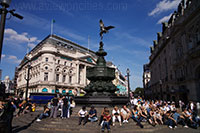
Piccadilly Circus
The Circus was created by John Nash as part of the future King George IV's plan to connect Carlton House - where the Prince Regent resided - with Regent's Park.
Billboards
The creation of Shaftesbury Avenue in 1885 turned the plaza into a busy traffic junction. This made Piccadilly Circus attractive for advertisers, who installed London's first illuminated billboards here in 1895. For some time the plaza was surrounded by billboards, creating London's version of Times Square, but
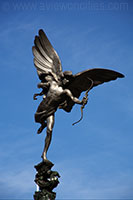
Eros Statue
currently only one building still carries large (mostly electronic) displays.
Shaftesbury memorial fountain
At the center of the Circus stands the Shaftesbury Memorial Fountain. It was built in 1893 to commemorate Lord Shaftesbury, a philanthropist known for his support of the poor.
The seminude statue on top of the fountain depicts the Angel of Christian Charity but was later renamed Eros after the Greek god of love and beauty. The fountain was made in bronze, but the statue is made of aluminum, at the time a novel and rare material.
Piccadilly
The name 'Piccadilly' originates from a 17th century frilled collar
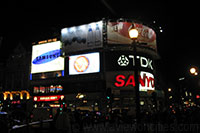
The Circus at night
named piccadil. Roger Baker, a tailor who became rich making piccadils lived in the area. The word 'Circus' refers to the roundabout around which the traffic circulated.
Piccadilly Circus today
Piccadilly Circus is now partly pedestrianized and a favorite place for people to congregate before going to the nearby shopping and entertainment areas. Soho, Chinatown, Leicester Square andTrafalgar Square are all within walking distance.
REGENT STREET Regent Street es una importante calle comercial de Londres ubicada en el West End. Llamada así tras el Príncipe Regente (posteriormente Jorge IV), fue diseñada por el arquitecto John Nashcomo parte de la ruta ceremonial desde la residencia del regente, Carlton House, en St James'shasta Regent's Park.
Comienza como Lower Regent Street en la intersección con Charles II Street y Waterloo Place siguiendo hacia el norte por Piccadilly Circus y convirtiéndose entonces en Regent Street, girando hacia el oeste y tras una curva se dirige hacia el norte otra vez. Tras pasar por Oxford Circus pasa a denominarse Upper Regent Street y finaliza en la intersección con Langham Place, Cavendish Place y Mortimer Street.
Anualmente se celebra un festival en Regent Street y las luces de Navidad forman parte de una tradición londinense, donde normalmente una celebridad cada año inaugura el encendido.
Regent Street es una importante calle comercial de Londres ubicada en el West End. Llamada así tras el Príncipe Regente (posteriormente Jorge IV), fue diseñada por el arquitecto John Nashcomo parte de la ruta ceremonial desde la residencia del regente, Carlton House, en St James'shasta Regent's Park.
Comienza como Lower Regent Street en la intersección con Charles II Street y Waterloo Place siguiendo hacia el norte por Piccadilly Circus y convirtiéndose entonces en Regent Street, girando hacia el oeste y tras una curva se dirige hacia el norte otra vez. Tras pasar por Oxford Circus pasa a denominarse Upper Regent Street y finaliza en la intersección con Langham Place, Cavendish Place y Mortimer Street.
Anualmente se celebra un festival en Regent Street y las luces de Navidad forman parte de una tradición londinense, donde normalmente una celebridad cada año inaugura el encendido.
Piccadilly Circus is a busy square in the heart of London. It is famous for the fountain that was installed here at the end of the 19th century and for the neon advertising that turned the square into a miniature version of Times Square.

Piccadilly Circus
The Circus was created by John Nash as part of the future King George IV's plan to connect Carlton House - where the Prince Regent resided - with Regent's Park.
Billboards
The creation of Shaftesbury Avenue in 1885 turned the plaza into a busy traffic junction. This made Piccadilly Circus attractive for advertisers, who installed London's first illuminated billboards here in 1895. For some time the plaza was surrounded by billboards, creating London's version of Times Square, but

currently only one building still carries large (mostly electronic) displays.

Eros Statue
Shaftesbury memorial fountain
At the center of the Circus stands the Shaftesbury Memorial Fountain. It was built in 1893 to commemorate Lord Shaftesbury, a philanthropist known for his support of the poor.
The seminude statue on top of the fountain depicts the Angel of Christian Charity but was later renamed Eros after the Greek god of love and beauty. The fountain was made in bronze, but the statue is made of aluminum, at the time a novel and rare material.
The seminude statue on top of the fountain depicts the Angel of Christian Charity but was later renamed Eros after the Greek god of love and beauty. The fountain was made in bronze, but the statue is made of aluminum, at the time a novel and rare material.
Piccadilly
The name 'Piccadilly' originates from a 17th century frilled collar

named piccadil. Roger Baker, a tailor who became rich making piccadils lived in the area. The word 'Circus' refers to the roundabout around which the traffic circulated.

The Circus at night
Piccadilly Circus today
Piccadilly Circus is now partly pedestrianized and a favorite place for people to congregate before going to the nearby shopping and entertainment areas. Soho, Chinatown, Leicester Square andTrafalgar Square are all within walking distance.

OXFORD STREET runs for approximately one and a half miles (two and a half kilometres) from Marble Arch at the north east corner of Hyde Park, through Oxford Circus to St Giles Circus, at the intersection withCharing Cross Road a
Oxford Street is home to a number of major department stores and numerous flagship stores, as well as hundreds of smaller shops. It is the biggest shopping street within Inner London, and though not necessarily the most expensive or fashionable, is considered to be the most important, and forms part of a larger shopping district with Regent Street, Bond Street and a number of other smaller nearby streets.
For many British retail chains their Oxford Street branch is regarded as their 'flagship' store. Major stores on the street include:
Museo Británico

El Museo Británico (en inglés: British Museum) es un museo de la ciudad deLondres, Reino Unido. Sus colecciones abarcan campos diversos del saber humano, como la historia, la arqueología, la etnografía y el arte.
El museo fue una de las primeras instituciones de este tipo en Europa. Custodia más de siete millones de objetos de todos los continentes, muchos de los cuales se encuentran almacenados para su estudio y restauración, o guardados por falta de espacio para exhibirlos. También cuenta con la mayor sala de lectura de la Biblioteca Británica, biblioteca que aunque ahora tiene sede propia, hasta el año 1973 también formaba parte del museo, al igual que el Museo de Historia Natural de Londres, que cambió a sede propia en el año1963.
La sección del Antiguo Egipto es la más importante del mundo después de la del Museo Egipcio de El Cairo. La entrada al museo y a muchos de los servicios que ofrece –como el de la sala de lectura–, son libres y gratuitos, a excepción de algunas exposiciones temporales.
Camden Town
Camden Town es el lugar más famoso dentro del barrio londinense de Camden. Se trata de un lugar muy conocido por su mercado y por la vida alternativa de sus habitantes.
Tienda de ropa de Camden Town
Durante el día, la zona está abarrotada de turistas y es una visita obligada, pero durante la noche se convierte en una zona poco recomendada para el público en general.
Tienda de ropa de Camden Town
Comer en Camden Town
En el mercado de Camden hay muchos puestos de comida, los puestecillos móviles que se sitúan en la plaza, bastante más caros pero con mejor aspecto (y donde la comida está bastante más buena), y los puestos fijos que hay en los soportales, puestos de múltiples nacionalidades con comida de todo tipo, en los que venden bandejas de comida por 3 o 4 libras.
Es curioso comprobar cómo, a medida que pasa la mañana, van bajando los precios de la comida y acaban vendiendo las bandejas por 1 libra.
Tiendas de Camden Town
Debido a sus peculiares habitantes, la mayoría de los locales que ocupan la calle son tiendas de ropa gótica o de tatuajes y piercings.
The Clock Tower of the Palace of Westminster - officially named Saint Stephen's Tower - is commonly known as the Big Ben. The tower is one of London's most famous landmarks.
Big Ben
The clock inside the tower was the world's largest when it was installed in the middle of the 19th century. The name Big Ben actually refers to the clock's hour bell, the largest of the clock's five bells. The other four are used as quarter bells.
Big Ben
There were two bells cast as the clock tower's hour bell. A first, 16 ton weighing bell was cast by John Warner and Sons in 1856. Since the Clock Tower was not yet completed, the bell was hung temporarily in the Palace Yard. The bell soon cracked so it was recast in 1858 in the Whitechapel Bell Foundry as a 13.5 ton bell. Unfortunately soon after this bell was placed in the belfry in July 1859, it cracked as well. This time, instead of yet again recasting the bell, the crack was repaired and a lighter hammer was used to prevent any more cracks. The hour bell was probably named after Benjamin Hall, the First Commissioner of Works. Some sources however claim the bell was named after Benjamin Caunt, a British heavyweight boxing champion.
The Clock
The clock was the largest in the world and is still the largest in Great-Britain. The clock faces have a diameter of almost 25ft (7.5m). The hour hand is 9ft or 2.7m long and the minute hand measures 14ft (4.25m) long.
The clock is known for its reliability, it has rarely failed during its long life span. Even after the nearby House of Commons was destroyed by bombing during World War II, the clock kept on chiming. The clock's mechanism, designed by Edmund Beckett Denison, has a remarkable accuracy. The clock's rate is adjusted by simply adding small pennies on the shoulder of the pendulum.
The clock is known for its reliability, it has rarely failed during its long life span. Even after the nearby House of Commons was destroyed by bombing during World War II, the clock kept on chiming. The clock's mechanism, designed by Edmund Beckett Denison, has a remarkable accuracy. The clock's rate is adjusted by simply adding small pennies on the shoulder of the pendulum.
The Tower
The tower was constructed between 1843 and 1858 as the clock tower of the Palace of Westminster. The palace is now better known as the Houses of Parliament.
The clock tower rises 316ft high (96m) and consists of a 200ft (61m) high brick shaft topped by a cast iron framed spire. The clock faces are 180ft / 55m above ground level.
The clock tower rises 316ft high (96m) and consists of a 200ft (61m) high brick shaft topped by a cast iron framed spire. The clock faces are 180ft / 55m above ground level.
Views
Unfortunately the clock tower is not publicly accessible, but if you're looking for views over London the London Eye and the Shard are currently the best options.
The Houses of Parliament, also known as the Palace of Westminster is the seat of Britain's two parliamentary houses, the House of Lords and the House of Commons.
In the middle of the 11th century, King Edward the Confessor had moved his court to the Palace of Westminster, situated on a central site near the river Thames.
In 1265 a parliament was created with two houses: the Lords and the Commons. The House of Lords met at the Palace of Westminster while the House of Commons did not have a permanent location.
After King Henry VIII moved his court to Whitehall Palace in 1530, the House of Lords continued to meet in Westminster. In 1547 the House of Commons also moved here, confirming Westminster as the central seat of government, a position it still holds today.
In 1265 a parliament was created with two houses: the Lords and the Commons. The House of Lords met at the Palace of Westminster while the House of Commons did not have a permanent location.
After King Henry VIII moved his court to Whitehall Palace in 1530, the House of Lords continued to meet in Westminster. In 1547 the House of Commons also moved here, confirming Westminster as the central seat of government, a position it still holds today.
The new Palace of Westminster
In 1834 a fire destroyed the Palace of Westminster , leaving only the Jewel Tower, the crypt and cloister of St. Stephens and Westminster Hall intact. After the fire, a competition was organized to create a new building for the two houses of parliament.
A design by Sir Charles Barry and his assistant Augustus Welby Pugin was chosen from 97 entries. They created a large but balanced complex in neo Gothic style and incorporated the buildings that survived the fire. The whole complex was finished in 1870, more than 30 years after construction started. It includes the Clock Tower, Victoria Tower, House of Commons, House of Lords, Westminster Hall and the Lobbies.
A design by Sir Charles Barry and his assistant Augustus Welby Pugin was chosen from 97 entries. They created a large but balanced complex in neo Gothic style and incorporated the buildings that survived the fire. The whole complex was finished in 1870, more than 30 years after construction started. It includes the Clock Tower, Victoria Tower, House of Commons, House of Lords, Westminster Hall and the Lobbies.

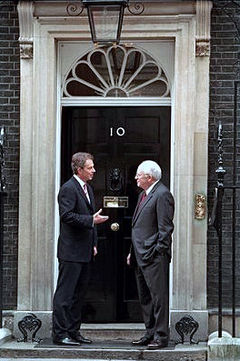 Downing Street in London, England has for over two hundred years housed the official residences of two of the most senior British Cabinetministers: the First Lord of the Treasury, an office now synonymous with that of Prime Minister of the United Kingdom, and the Second Lord of the Treasury, an office held by the Chancellor of the Exchequer. The Prime Minister's official residence is 10 Downing Street; the Chancellor's official residence is next door at Number 11. The Government's Chief Whip has an official residence at Number 12, though the current Chief Whip's residence is at Number 9.
Downing Street is located in Whitehall in central London, a few minutes' walk from the Houses of Parliament and a little farther from Buckingham Palace. The street was built in the 1680s by Sir George Downing (1632–1689) on the site of a mansion called Hampden House. The houses on the west side of the street were demolished in the nineteenth century to make way for government offices, now occupied by the Foreign and Commonwealth Office.
Downing Street in London, England has for over two hundred years housed the official residences of two of the most senior British Cabinetministers: the First Lord of the Treasury, an office now synonymous with that of Prime Minister of the United Kingdom, and the Second Lord of the Treasury, an office held by the Chancellor of the Exchequer. The Prime Minister's official residence is 10 Downing Street; the Chancellor's official residence is next door at Number 11. The Government's Chief Whip has an official residence at Number 12, though the current Chief Whip's residence is at Number 9.
Downing Street is located in Whitehall in central London, a few minutes' walk from the Houses of Parliament and a little farther from Buckingham Palace. The street was built in the 1680s by Sir George Downing (1632–1689) on the site of a mansion called Hampden House. The houses on the west side of the street were demolished in the nineteenth century to make way for government offices, now occupied by the Foreign and Commonwealth Office.


Covent Garden
is a district in London on the eastern fringes of the West End, between St. Martin's Lane and Drury Lane.It is associated with the former fruit and vegetable market in the central square, now a popular shopping and tourist site, and the Royal Opera House, which is also known as "Covent Garden"

.jpg)








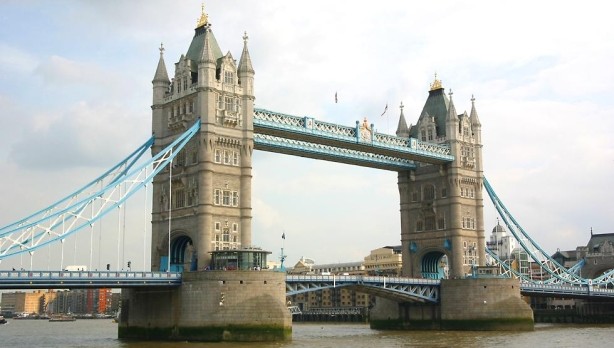



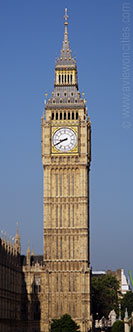
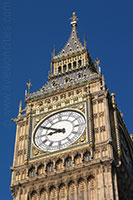
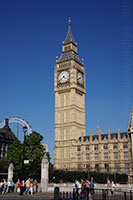
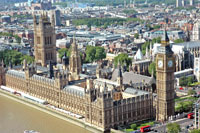
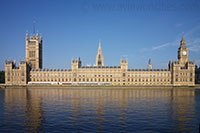
No hay comentarios:
Publicar un comentario